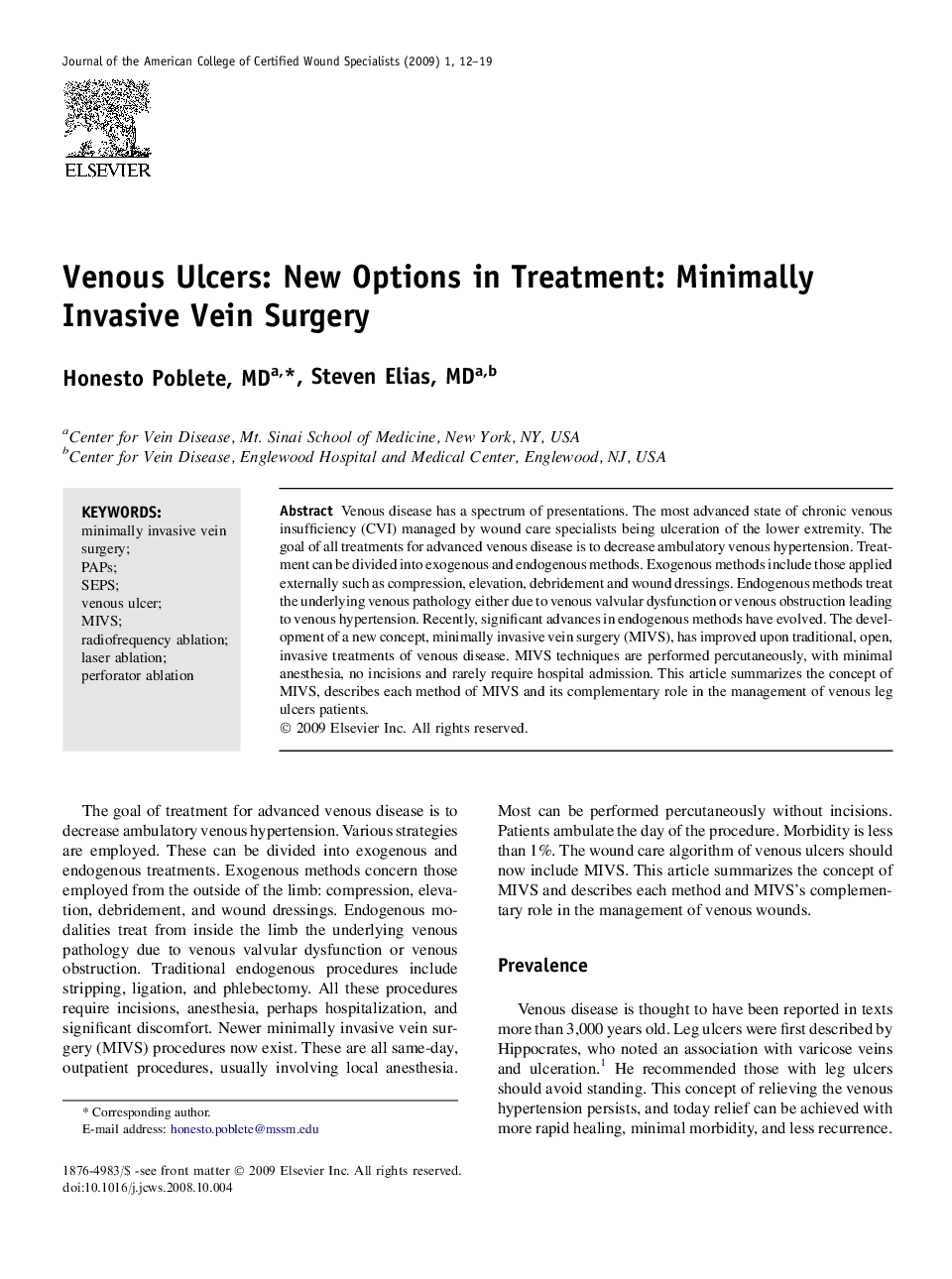| Article ID | Journal | Published Year | Pages | File Type |
|---|---|---|---|---|
| 2700124 | The Journal of the American College of Certified Wound Specialists | 2009 | 8 Pages |
Abstract
Venous disease has a spectrum of presentations. The most advanced state of chronic venous insufficiency (CVI) managed by wound care specialists being ulceration of the lower extremity. The goal of all treatments for advanced venous disease is to decrease ambulatory venous hypertension. Treatment can be divided into exogenous and endogenous methods. Exogenous methods include those applied externally such as compression, elevation, debridement and wound dressings. Endogenous methods treat the underlying venous pathology either due to venous valvular dysfunction or venous obstruction leading to venous hypertension. Recently, significant advances in endogenous methods have evolved. The development of a new concept, minimally invasive vein surgery (MIVS), has improved upon traditional, open, invasive treatments of venous disease. MIVS techniques are performed percutaneously, with minimal anesthesia, no incisions and rarely require hospital admission. This article summarizes the concept of MIVS, describes each method of MIVS and its complementary role in the management of venous leg ulcers patients.
Related Topics
Health Sciences
Medicine and Dentistry
Orthopedics, Sports Medicine and Rehabilitation
Authors
Honesto MD, Steven MD,
